The American military transport aircraft Fairchild C-123 "Provider" - the brainchild of Russian emigrant Strukov. Part of 1
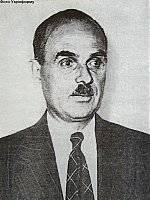 Mikhail Mikhailovich Strukov 29 was born on January 1883 of the year in the city of Yekaterinoslavl in Ukraine (today the city of Dnepropetrovsk) in a noble family. Unfortunately, there is very little information about the period of his life in Russia. It is known that, after receiving a secondary education, Strukov entered the construction department of the Kiev Polytechnic Institute. During the First World War he served in cavalry, was promoted to officer and received the Cross of St. George.
Mikhail Mikhailovich Strukov 29 was born on January 1883 of the year in the city of Yekaterinoslavl in Ukraine (today the city of Dnepropetrovsk) in a noble family. Unfortunately, there is very little information about the period of his life in Russia. It is known that, after receiving a secondary education, Strukov entered the construction department of the Kiev Polytechnic Institute. During the First World War he served in cavalry, was promoted to officer and received the Cross of St. George.Strukov did not accept the revolution and was among the “white immigrants” aboard a steamer leaving Vladivostok. In the 1920 year, having reached New York with many adventures, a former cavalryman with aristocratic manners and good artistic abilities quickly became familiar with the circles of Russian emigration. Here he met Pasvolskaya Larisa Mikhailovna, an art historian, in a marriage with whom they had three sons. Defending a diploma in civil engineering at Columbia University, Strukov succeeded in building bridges, railways, theaters, offices and hotels. His Business got better, and in 1938, an emigrant from Russia was given American citizenship.
Strukov was an excellent glider pilot and devoted a lot of time to this sport. He did not miss the major competitions held in the United States, developed and built non-motorized vehicles, made flights on them, but considered this occupation only as a hobby.
The situation changed dramatically during the Second World War, when in the United States, on the instructions of the aviation command, transport gliders began to be created. Strukov appreciated the opportunity to get a solid state order. In 1943, the military put forward requirements for a transport-landing glider that would be towed by high-speed aircraft. Strukov proceeded to build such a device. As a manufacturing base, a small furniture factory, Chase Brothers, located in Manhattan, was used. 30 of October of the same year, after the bench passed the glider's wing, the contract was signed. The furniture factory became Chase Erkraft Company, Strukov became president and chief designer of the company, and his deputy was another world-famous person from Russia, Gregor (Grigorashvili).
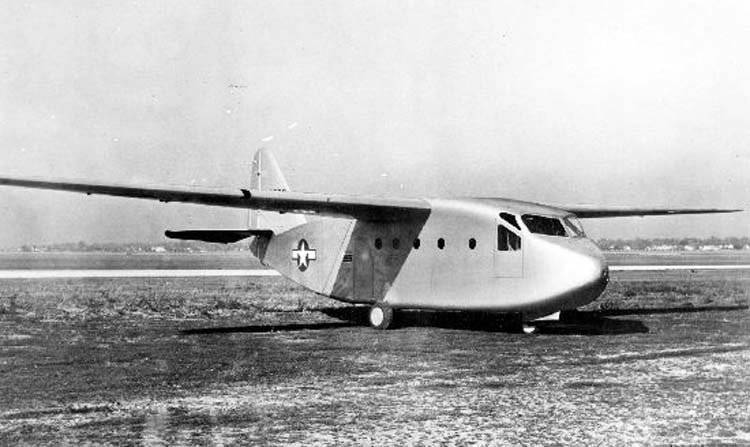
By the fall of 1944, the glider, designated XCG-14 (eXperimental Cargo Glider), was built. The car was an all-wood high-wing having a wing with a “Strukov profile”. Carrier plating is ordinary plywood. Control surfaces covered with cloth. In a comfortable cargo cabin with side doors on the folding seats were placed16 paratroopers. For loading / unloading equipment folding rear fuselage was removed to the side. The double cockpit was equipped with a large "greenhouse" lantern. Chassis - tricycle with tail wheel, non-removable.
XCG-14 for the first time rose in the sky 4 January 1945, at the airport of New Ark near Philadelphia. Strukov personally participated in the trials as a co-pilot. The P-47B fighter (the development of two more “our” Kartvels and Prokofiev-Seversky) towed the glider at speeds up to 360 kilometers per hour. But, despite the good results, no orders were received for the XCG-14 - the American army had a sufficient number of light gliders. At the same time, middle-class devices were absent altogether, and Strukova’s firm was given an order for such a glider.
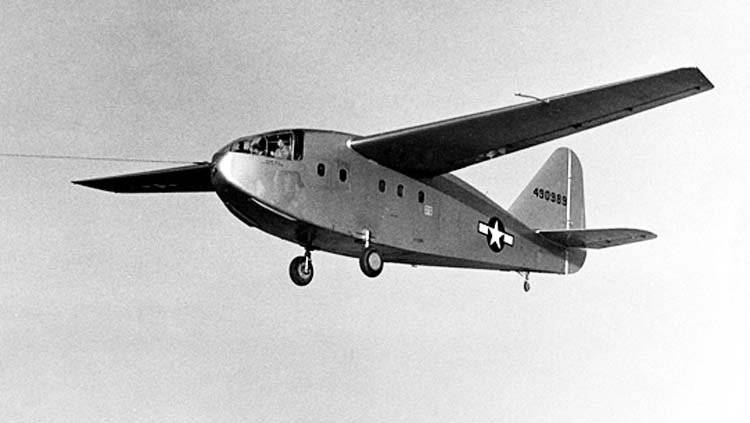
To speed up its construction, Strukov used the wing of the XCG-14, but made a new fuselage. Instead of a wooden truss was used metal, made of steel pipes. An army truck or paratroopers 24-28 was located in the cargo cabin. The rear part of the fuselage for loading / unloading technology swung up on hinges, part of the cargo floor fell, performing the role of a ramp. Front wheel tricycle retractable chassis. For the first time, the nose of an experienced XCG-14А was adorned with a proprietary emblem: a landing-transport glider in a circle, with the inscriptions "Stroukoff" and "Avitruk" around the rim. In the air, the glider went 16 October 1945 of the year. This relatively heavy machine was surprisingly easy to handle and very maneuverable. But, despite the excellent performance characteristics and the possibility of wide application, the XCG-14A series did not go. The war is over, and the need for mixed-design gliders has disappeared.
Strukov was faced with a choice: either to stop his design activities and return to his previous studies as most temporary planning companies did, or to continue risky attempts to take his place in the busy post-war aircraft market. Strukov preferred the last path.
In the United States, at the end of the war, a concept appeared that envisaged the conversion into transport airframe gliders and vice versa, depending on specific situations. Strukov in the spring of 1945 offered the military projects of a pair of such all-metal gliders (carrying capacity of 3,6 and 7,2 tons). It was assumed that the non-engine and aircraft versions will be easily converted into each other, used individually or in pairs, and the aircraft must be towed by a heavier glider. This concept Strukov gave the name "mother-daughter." Customers reacted favorably to his proposals, and at the beginning of 1946, a contract was signed for the construction of two XCG-18A medium-transport gliders. Chase Aircraft Corporation by then moved to West Trenton, New Jersey, where Strukov created all of his subsequent aircraft. The staff expanded. The company gave work to many immigrants from the White emigration and “displaced persons” from Europe (for example, Seredinsky, Anchurin, Protasov, who later became major figures in the American aerospace industry). 1946 year in the life of Strukova was associated not only with pleasant moments, but also with the death of his wife. However, being on the seventh ten, Strukov soon married and again became a father. The XCG-18A Avitruc is a high-wing with a truss fuselage, welded from steel pipes, to which duralumin sheeting, reinforced by stringers, was fastened with rivets. The cargo compartment of rectangular section (8,25x2,35x2 meters) served to accommodate paratroopers for 30 (10 with folding along the sides and 10 - in the middle). The sanitary option served to install the equipment for transporting the 24 wounded, as well as the two accompanying ones. The cab ended up with a big cargo truck with a ramp, which allowed loading vehicles under its own power or drawing loads with the help of a land winch.
The cockpit for safety was separated by a tubular partition, its floor was located above the cargo. Two steel I-beam spars together with truss and wall ribs constituted the wing power structure. Duralumin sheets served as its skin. Ailerons and rudders equipped with electric trimmers, as well as slotted flaps, covered with fabric. To ensure good take-off and landing characteristics, the flaps could deviate up to 75 degrees and had a large area. A three-axle chassis with a retractable nose wheel was designed to withstand rough landings on unprepared sites. In addition, it allowed the glider to "squat" to facilitate loading equipment.
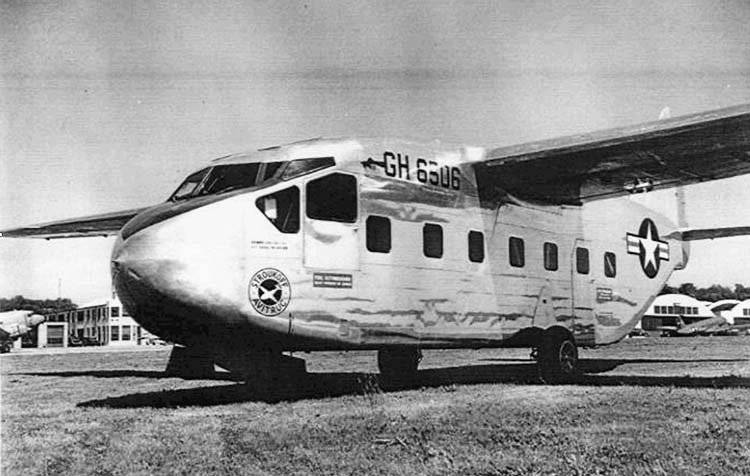
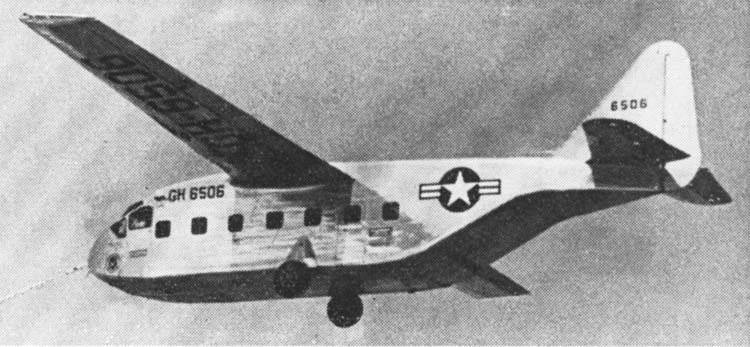
Two XCG-18A contractually agreed in December 1947 were completed, three more were at different stages of construction. Tests of the first instance showed excellent performance of the device. This circumstance prompted the military to test the second motor copy. Strukov designed it for two X-NUMX-strong Wright R-1425-1820 engines. However, the designer had to use the R-101-1100 X-NUMX-strong Pratt-Whitney, because the nacelles from the crashed C-2000 were provided by the military to speed up the work. The Avitrak engine variant, which received the designation YC-11, 54 first took off from the factory airfield of Mercer County. This aircraft was given the corporate official designation MS-122 (MS - Mikhail Strukov). Trials continued throughout the 18.11.1948 year at Wright Field at the Air Force Center. On some flights, Strukov flew as a member of the crew. YC-7 showed generally good results. With a take-off mass in 1949 tons, the take-off distance to the height of the conditional obstacle was 122 meters, and the landing distance was 13,2. During one of the flights, the aircraft reached an 250 speed of kilometers per hour.
Without waiting for the completion of the tests, the military in the 1948 year demanded to complete two XCG-18A glider motor variants under construction. They were given the designation YC-122A. From the original YC-122, the first unit was no different, on the second, finally, it was possible to install the Wright motors R-1820-101 and screws with a diameter of 3,8 meter. This aircraft was given the designation YC-122B. The flight performance was improved, but the customers were not satisfied with the payload. The military put forward a number of new requirements. Strukov in accordance with them in 1949 year, developed a draft modification - YC-122C. It differed from its predecessors in the size of flaps and tail, shape, installation of fuel tanks in the wing, as well as a number of other improvements. As the take-off weight of the car increased, it was planned to install more powerful engines.
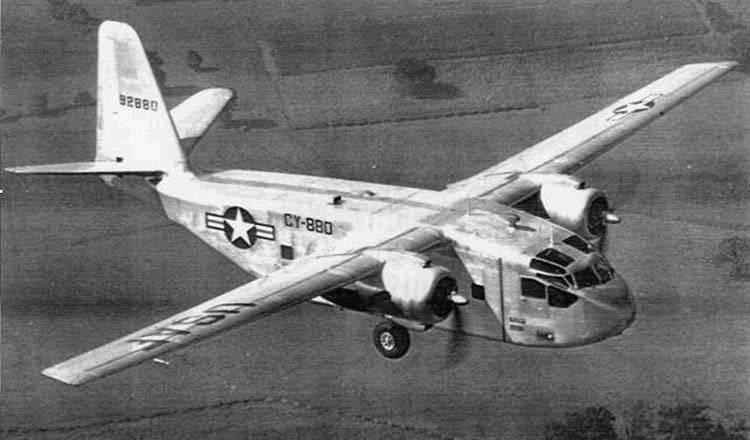
In 1949, Chase received an order for the YC-122C series of nine vehicles. But in the first copies, the designer was forced to use the old “Wrights”. In connection with their terrible work, the tests were delayed. Only in the middle of 1951, the company was able to get new engines, although their power was still lacking. LTH YC-122C, despite the non-optimal engines, were generally quite good. The testers concluded that when the aircraft is equipped with more reliable and powerful engines, it can be used in the armed forces and will replace the C-47.
However, at the beginning of the 1950-ies, the air force headed for jet aircraft, while civilians preferred to purchase the C-46, C-47, which in the weight category were close to YC-122, at bargain prices. In this regard, the release of the last stopped. All built YC-122, collected in a separate squadron, and successfully exploited for several years. Two of them in 1957 were transferred to Hiller for conversion to X-18. In the second half of 1950, the 7 of the remaining YC-122 fell into civilian airlines.
The fate of another development Strukova has developed much better. Her story December 2 started on 1946 with the signing of a contract with the military for the construction of two heavy metal all-metal transport gliders. The order was completed in two years. However, about this project in the second part.
Based on materials:
http://ru-aviation.livejournal.com
http://alternathistory.org.ua
http://www.airwar.ru
http://www.dogswar.ru
http://www.airwiki.org
http://avialegend.ru
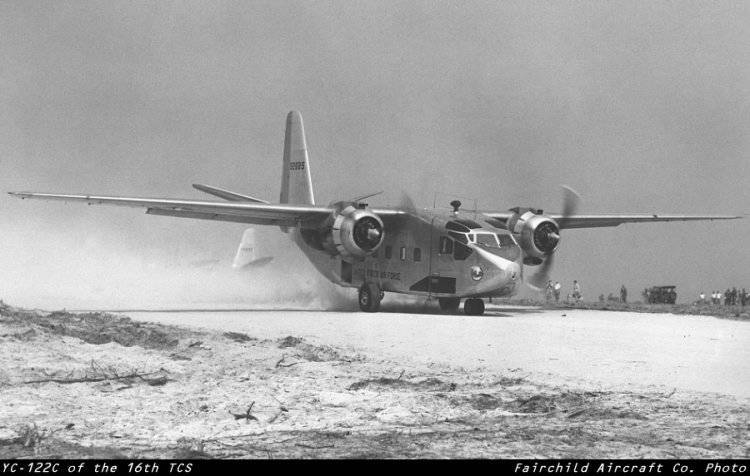
Information